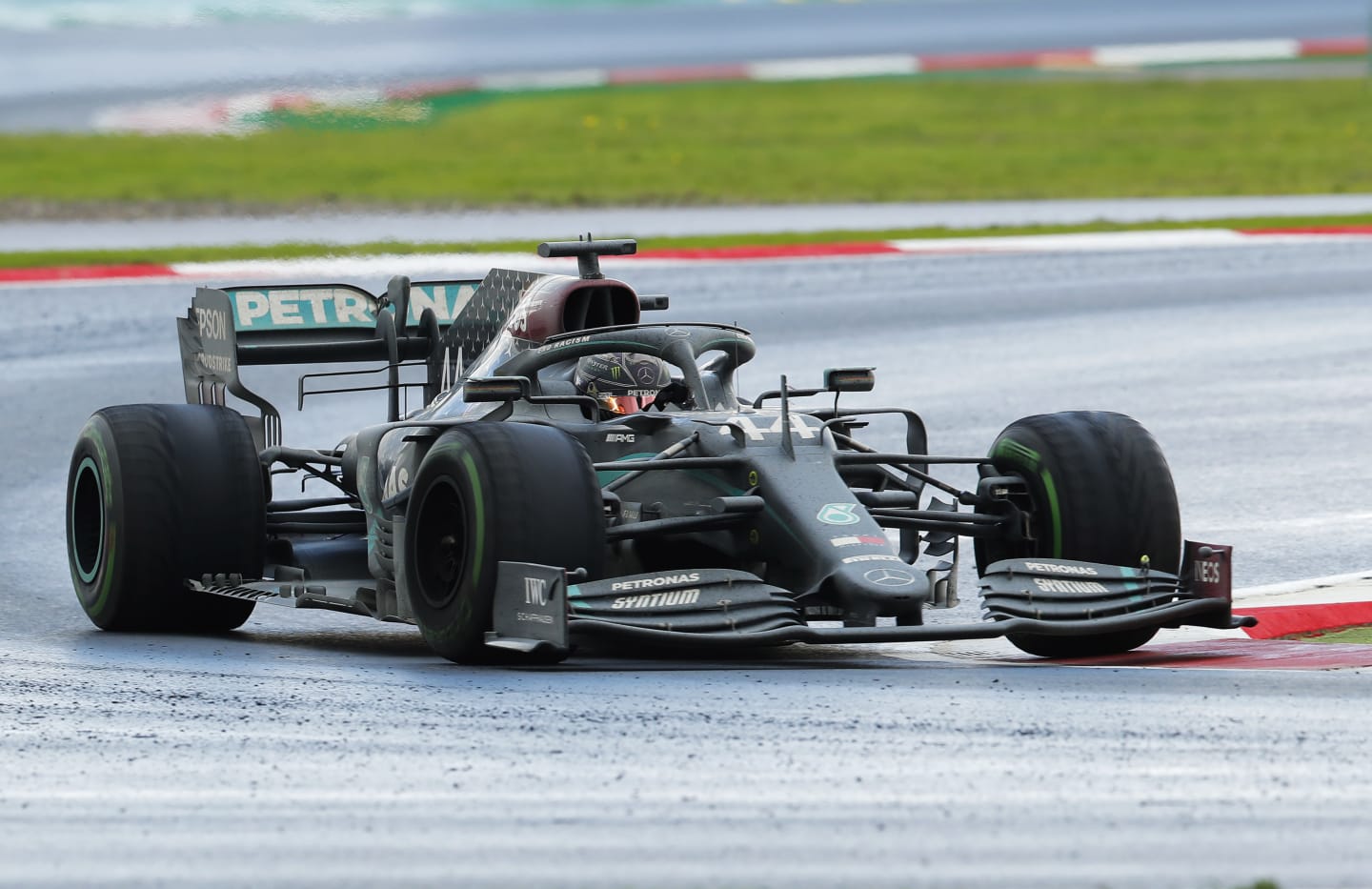
Feature
How Hamilton was able to turn around a 5-second qualifying deficit to win in Turkey by 30 seconds

Share

In qualifying for the Turkish Grand Prix, the driver with comfortably the most poles in history lapped Istanbul Park a full 4.795s slower than Racing Point’s Lance Stroll – and yet Lewis Hamilton managed to win the Grand Prix, and the seventh title that went with it, by 31.633s from Stroll’s team mate Sergio Perez. After one of the drives of the season, Mark Hughes looks at why Hamilton’s poor qualifying performance was actually the key factor behind his win.
This was perhaps the most intriguing race of a very intriguing season so far. Lewis Hamilton clinched that seventh title in great style with a victory that left the nearest of his rivals half a minute behind at the flag. Yet a couple of those rivals – the pole-sitting Lance Stroll and Max Verstappen – had been around 5s faster than his Mercedes in qualifying.
READ MORE: Hamilton seals historic 7th title with peerless wet-weather victory in Turkey
The remarkable switch around in form from Saturday to Sunday was to do with rear tyre temperatures, which the Mercedes could not generate in the short runs of qualifying but could eventually achieve after enough laps on Sunday. Once that crucial temperature threshold was reached, then normality returned and the W11 reverted to being the fastest car. Hamilton did the rest - and then some.
Why was the Mercedes struggling so much initially? Hamilton gave some clues pre-race. “The direction in which we’ve developed our car, the things we’ve been asking for over the years, if you look at the season at this part of the year we’d normally be in Singapore, Brazil, places where thermal deg, the rear tyres getting too hot is the issue. But we’re here in Europe where it’s colder. That’s not the normal progression of the year.

The original 2020 calendar had the teams racing at a balmy Interlagos on November 15, not a frigid Istanbul Park
“Basically we just can’t kept temperature into the rear tyre. I don’t want to reverse it, because this car could do the whole lap of Singapore on the tyres and if we were in Singapore right now we’d be ahead. There’s been a lot of debate in the team about it the last couple of days. But were not really disappointed, funnily enough.”
The team’s track engineering director Andrew Shovlin believes that, in hindsight, some changes may have eased the problem in qualifying however. “I don't know how we would fare if we went back into qualifying now. I like to think we would do a better job but it's a bit of a bold statement for us to say we would have been five seconds quicker, or we would have been fighting for pole or even doing the times that Max did.
“But the changes we are allowed to make on race day with the change in climatic conditions definitely helped. You can affect how much heating you're doing, putting the energy from the brakes into the wheelrims. We were working a bit harder to try and keep the temperature that we've got on formation laps and out laps but the thing with tyres and tyre temperature issues, when you're cold, is two or three degrees can make the difference between getting them working, generating the grip and the temperatures going up or just on that cold side where the rubber becomes like plastic and it's got no grip, and it just gets colder and colder.
“You don't need to do a lot to go from one phase into the other – but… today it felt like we were pretty normal, in terms of our ability to get them working. Some are better off the line than us but we were certainly in the game, whereas [on Saturday], we were not doing a very good job.”
READ MORE: Seventh title 'beyond wildest dreams’, admits Hamilton
The moment Lewis Hamilton became a 7-time world champion
Regardless of how well the team mitigated the effects, the problem arose from a basic car trait that is normally a strength, as Hamilton alluded to. The Mercedes can normally run longer stints than the Red Bull, with less tyre less degradation. That’s a result of years of development and comes historically from a base in 2012-13 where the Mercedes was too hard on its rear tyres. This wasn’t a trait that could have been reversed out of with a set-up change, but was part of the design.
Valtteri Bottas in the sister car illustrated the stark difference in generating the temperatures and not. He finished a lapped 14th after spinning on six occasions. His car had suffered damaged steering after he’d hit Esteban Ocon’s Renault at Turn 9 on the first lap. Thereafter, he could not properly correct rear slides through left-handers.
2020 Turkish Grand Prix: Onboard as Bottas collides with Ocon twice in crazy opening lap
Every time he spun, the car would instantly lose the tyre temperature it had taken many laps to build up. The Mercedes needed as many as seven laps to get adequate temperatures.
So Bottas spent at least 49 of the race’s 58 laps trying to get tyre temperature then having to start again from scratch each time he spun. With the temperatures in the window by the final lap, he set the second-fastest lap of the race! That was the starkness of difference between too cold and just right.
YOU MIGHT ALSO LIKE
News Bortoleto concedes ‘tricky’ start cost him in Japan while Hulkenberg reflects on ‘frustrating’ Suzuka outing
News Gasly and Doohan vow to chase Alpine’s first points with pace ‘not miles away’
News Norris concedes McLaren had ‘nothing special’ in Japan as he gives verdict on Verstappen pit exit incident
News Piastri insists pace in Japan was ‘mega’ as he explains McLaren’s ‘fair’ response in battle with Norris




